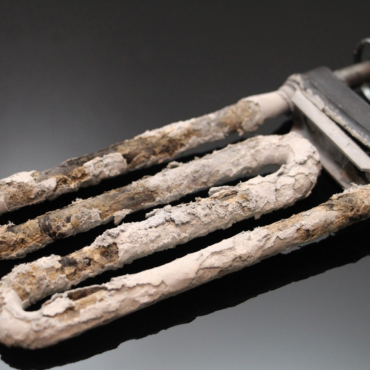Maintaining cleanliness in bakery production environments is vital for ensuring food safety, product quality, and regulatory compliance. Traditionally, bakeries have relied on manual scrubbing, detergents, and chemical sanitizers to clean equipment and surfaces. However, dry steam cleaning is emerging as a high-performance, eco-friendly alternative—especially effective in dry production zones and areas sensitive to moisture.
This blog explores how dry steam cleaning works, why it’s becoming more popular in the baking industry, and how it compares to conventional cleaning with chemicals and detergents.
What Is Dry Steam Cleaning?
Dry steam cleaning uses superheated water vapor—typically at temperatures above 290°F (143°C) and very low moisture content (<10%)—to sanitize surfaces and remove soils. The “dry” aspect means the steam contains minimal water, allowing it to clean without saturating surfaces or leaving behind puddles.
This method is particularly well-suited for environments where traditional wet cleaning is impractical or where excessive moisture can damage machinery or attract microbial growth.
Benefits of Dry Steam Cleaning in Bakeries
- Low Moisture, High Heat
High-temperature dry steam effectively breaks down fats, oils, flour dust, and sugars without the use of added chemicals. The high heat helps kill bacteria, mold, and pathogens, while the low moisture content prevents water damage to electrical components and packaging machinery.
- Improved Allergen and Pathogen Control
Dry steam vapor can penetrate into microscopic cracks and hard-to-reach areas where allergens and bacteria often accumulate. This makes it particularly useful for food manufacturers concerned with cross-contamination and microbial risk.
- Faster Cleaning and Drying Times
Because surfaces don’t get soaked, there is little to no downtime required for drying. This allows production lines to resume quickly after sanitation—an advantage in facilities with frequent product changeovers or 24/7 operations.
- Eco-Friendly and Sustainable
Dry steam cleaning uses a fraction of the water required for conventional cleaning, making it more environmentally responsible. It also reduces the need for harsh chemical sanitizers and the associated disposal requirements.
Comparing Dry Steam Cleaning to Chemical Cleaning
| Feature | Dry Steam Cleaning | Chemical-Based Cleaning |
| Moisture Level | Very low (<10%) | High—often requires rinsing |
| Sanitizing Mechanism | Heat (thermal kill) | Chemical reaction |
| Dry Time | Immediate | Requires significant drying time |
| Residue | None | Possible chemical residues |
| Water Use | Minimal | High water consumption |
| Worker Exposure | No harsh fumes | May require gloves, masks, and ventilation |
| Environmental Impact | Low | Higher due to water and chemical waste |
| Effectiveness on Allergens | High—removes proteins from surfaces | Varies—can smear if not rinsed well |
In many food production environments, traditional cleaning methods involving detergents or bleach require a rinse step to remove residues, which adds time and uses more water. These chemicals and cleaning agents can also be corrosive to equipment over time. Steam, in contrast, uses heat to sanitize without chemical interaction, reducing the long-term wear on machinery.
Ideal Applications in Bakeries
Dry steam cleaning is especially useful in:
- Dry clean only zones: Areas with sensitive electrical components or packaging machinery
- Conveyor belts and oven areas: Where debris tends to build up but water cannot be used
- Drain cleaning: Targeting microbial buildup with high-temperature vapor
- Surfaces prone to allergen retention: To help prevent cross-contact contamination
Challenges and Considerations
While dry steam cleaning offers significant advantages, it is not a complete replacement for all cleaning processes. In certain scenarios—such as removing large amounts of baked-on residue or heavy grease—steam may need to be combined with mechanical action or pre-cleaning. Additionally, operators must be trained on proper use to avoid overheating delicate components or misapplying the equipment.
Final Thoughts
Dry steam cleaning is transforming the way bakeries approach sanitation. By offering a safer, faster, and more sustainable alternative to chemical-based methods, it supports not only food safety compliance but also long-term operational efficiency and environmental stewardship. Although we are speaking about bakeries in this article, superheated steam can be used in many environments for various cleaning needs. This can include: hardwood floors, tile floors, sealed floors, floor mats, sealed doors, furniture, bathroom surfaces, stainless steal equipment, water tanks, upholstered furniture, glass surfaces, rugs, kitchen appliances, boilers, hard surfaces and more. Dry steam, also known as vapor technologies, can also be used to address cleaning various materials like loose dirt or soap scum.
For bakeries facing labor shortages, water use restrictions, or stricter allergen controls, dry steam cleaning is a cost-effective solution worth considering.
Read more from Goodway’s dry steam cleaners in International Bakery
Whether you require installation, repair, or maintenance, our technicians will assist you with top-quality service at any time of the day or night. Take comfort in knowing your indoor air quality is the best it can be with MOE heating & cooling services Ontario's solution for heating, air conditioning, and ventilation that’s cooler than the rest.
Contact us to schedule a visit. Our qualified team of technicians, are always ready to help you and guide you for heating and cooling issues. Weather you want to replace an old furnace or install a brand new air conditioner, we are here to help you. Our main office is at Kitchener but we can service most of Ontario's cities
Source link

